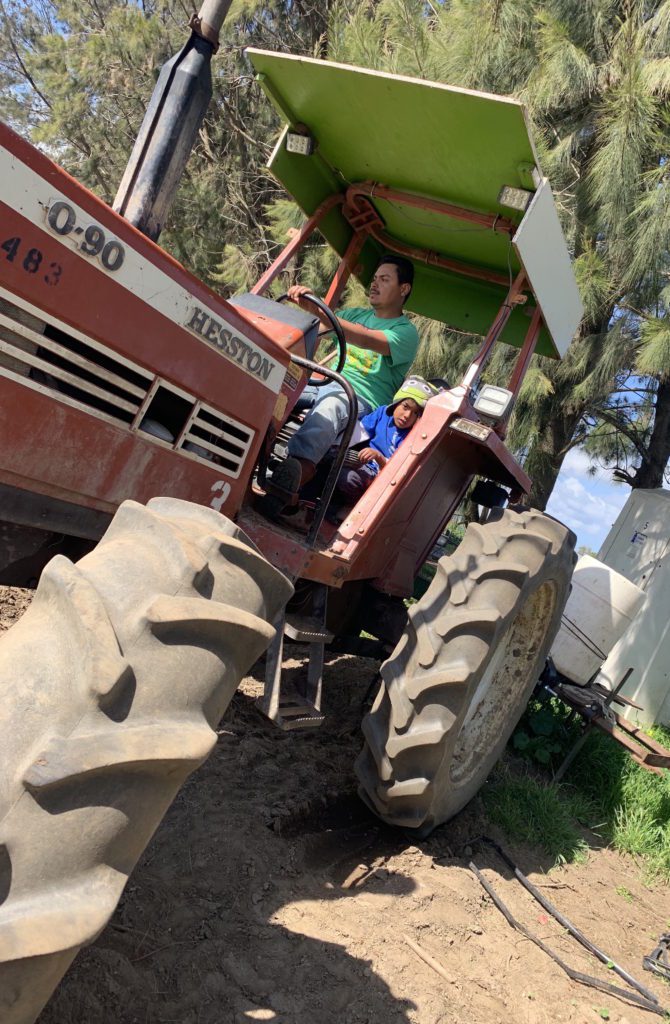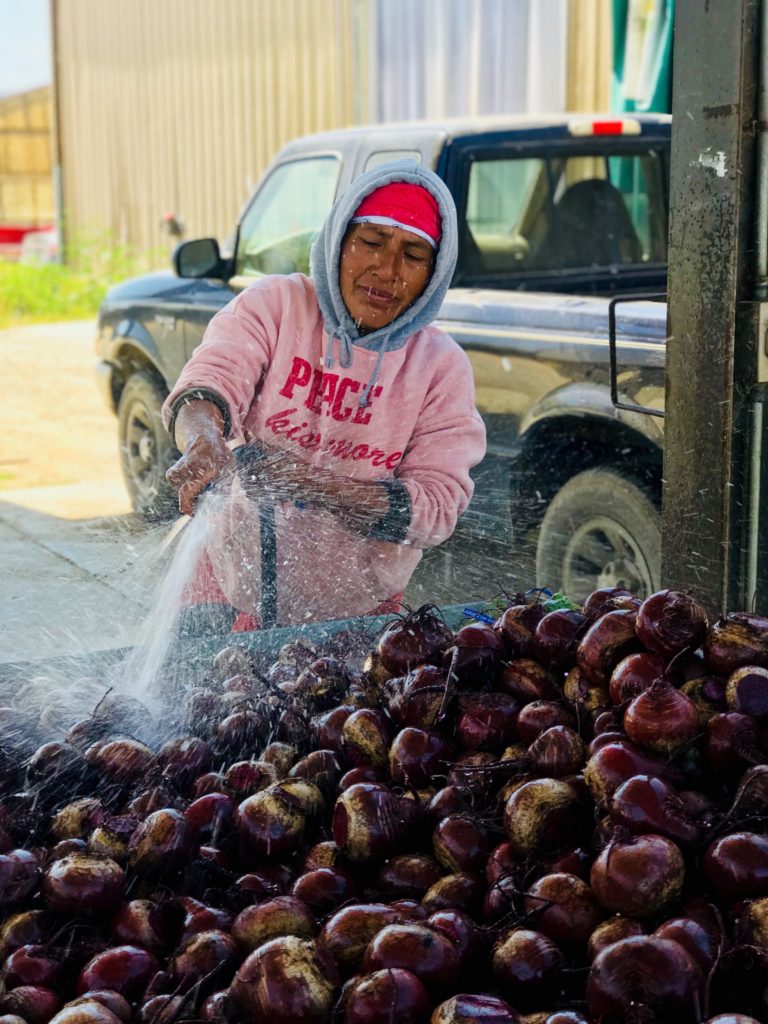
To understand what misfit foods are, you have to understand where they come from. Or, more accurately, who they come from.
We source regionally as much as possible, but because organic produce makes up only 1% of the U.S. produce landscape, we also partner with other businesses that help smaller organic growers across the country bring their food to market. (Waste is a pervasive problem everywhere in the food system, not just in the Northeast.)
One such partner is a food hub called Amor Organics. They help aggregate the supply of produce from small, family-owned farming operations around the Salinas Valley in California. Typically this food is sold at farmers’ markets, but it may go to waste at a loss to the farmers if they have excess product and no outlet to sell or donate it.
We chatted with Brian Bañuelos of Amor Organics to find out more about their operations and how they support a new generation of industrious American family farmers.
Q: Tell us a little bit about what you do at Amor.
A: We’re initially a food hub that gathers all of these different organic growers and allows them to reach greater volume. Let’s say one grower has 50 cases of jalapeños and another has 45. That will barely reach a pallet, and in this industry nobody buys little things here and there. They just want a big load.
Our food hub Amor Organics, along with another one called Harvest Santa Barbara, encompasses about 250 growers together. A good chunk of these farmers go to their own farmers’ markets and that’s pretty much the way they survive. Growing organic is a lot more expensive to try to hit price points, so they’re reliant on farmers’ markets to make a living. Sometimes when they’re long on an item, they come to us. A lot of them grow a lot of specialty, “weird” stuff, just because that’s what the farmers markets want.
Q: So if they bet on a certain veggie being the “cool” one next season, what happens if it’s not? How do food trends impact whether something becomes excess?
A: Yeah, Misfits bought a lot of stuff like this from us last year that we’re really grateful for. One grower grew a lot of black radishes assuming it would be a hot market; he planted 2-3 acres of it and couldn’t sell it. And Misfits consumed everything he had week in and week out.
As far as excess goes, these growers will harvest the USDA #1 stuff that’s sold in the industry day in and day out. Then, there’s the leftover stuff, the ugly sister, if you will. They don’t pack it because, say, the green cabbage may be too small. That’s where we step in and you guys come in handy. If I see a yield of 400 cases, I’ll bring in a harvesting crew and make sure it gets harvested. Then I’ll let Misfits know ahead of time, and you’re able to take it.
Another situation might be one that we have right now with broccoli—the market really crashed recently. You guys were able to give a grower a return for their money. Otherwise the grower is losing money. They had to pay someone to harvest it, they had to pay for cartons, they had to pay for all the input in the field. We try to get as much out of the field just to give them more back in return.
Q: Why is getting produce in a more direct fashion from growers so important versus shopping at a typical grocery store?
A: It’s just fresher, for one. Butternut squash, for example, is something you should never buy at the store. It’s probably been sitting around for four months before it even gets to the store. You’ll still be able to get some good things out of the bins, but I’d stay away from it.
We always try to harvest as our orders come in. We always have a boots on the ground out in the fields checking to make sure everything looks good. We actually came up with a quality control app so it gets checked out in the fields, when it arrives in our own cooler, and it gets quality checked before it ships. Even if Misfits takes ugly produce, it still gets checked and has to be up to par before it ships out to you guys. Everything we order ships out the following day.
Q: Tell us a bit about the growers you work with.
A: For the most part they’re small businesses. They’re all family-owned, you have the daughter and son working. They can’t really afford labor, so the more the family is able to help at the ranch, the more valuable that is to them.
We also have partners that have been part of the Agriculture and Land-Based Training Association (ALBA) school its land-based training where they train recent immigrants to become farmers. They teach you day in and day out how to grow these commodities. That’s actually where we source from.
Maria Ana Reyes, she’s at the ALBA ranch and this will be her fourth year there. They start you off with a quarter acre, and after that you either want to keep going or call it quits. For the most part, people keep going. That ranch is about 110 acres, so you have about 30 farmers there. And you’re able to get more acres if you do well. After 5 years, you’re pretty much on your own, they make sure you have somewhere to go farm. You start your own organic farm at about 10 acres up to however big you want to be.

Maria Ana Reyes, working at her farming operation in California’s Salinas Valley. Originally from Guerreo, Mexico, she worked at commercial farms for many years, often unpaid, until she joined an training program that creates economic opportunity for limited-resource and aspiring organic farmers through land-based education.
Maria is up to 10 acres now. She’s the mother of four kids, one in high school, three in college. You’ll catch them out at the ranch during spring and summer break. Her husband helps her out too. You’ll find Maria in the tractor, though. Maria does not let her husband drive the tractor. [laughs]
She’s a very hardworking woman out there every day. Sometimes you have to water at 10 o’clock at night, and she’s doing it. She’s just one of these growers, we have about 25 others with their own stories. Next year our goal is to help them with inputs, whatever is needed, like a transplant of seeds. All of this stuff will be run through our platform to be able to help them. We’re pretty much just here to help these small farmers.

Comments (3)
Fascinating! Thanks for the inside peek!
THIS story covers what real organic growing is all about!! Hurray to the writer and a triple big “hurray” to the farms. Theorganizations sponsoring and training farmers are the true HEROS in the is current time!
This is really cool!